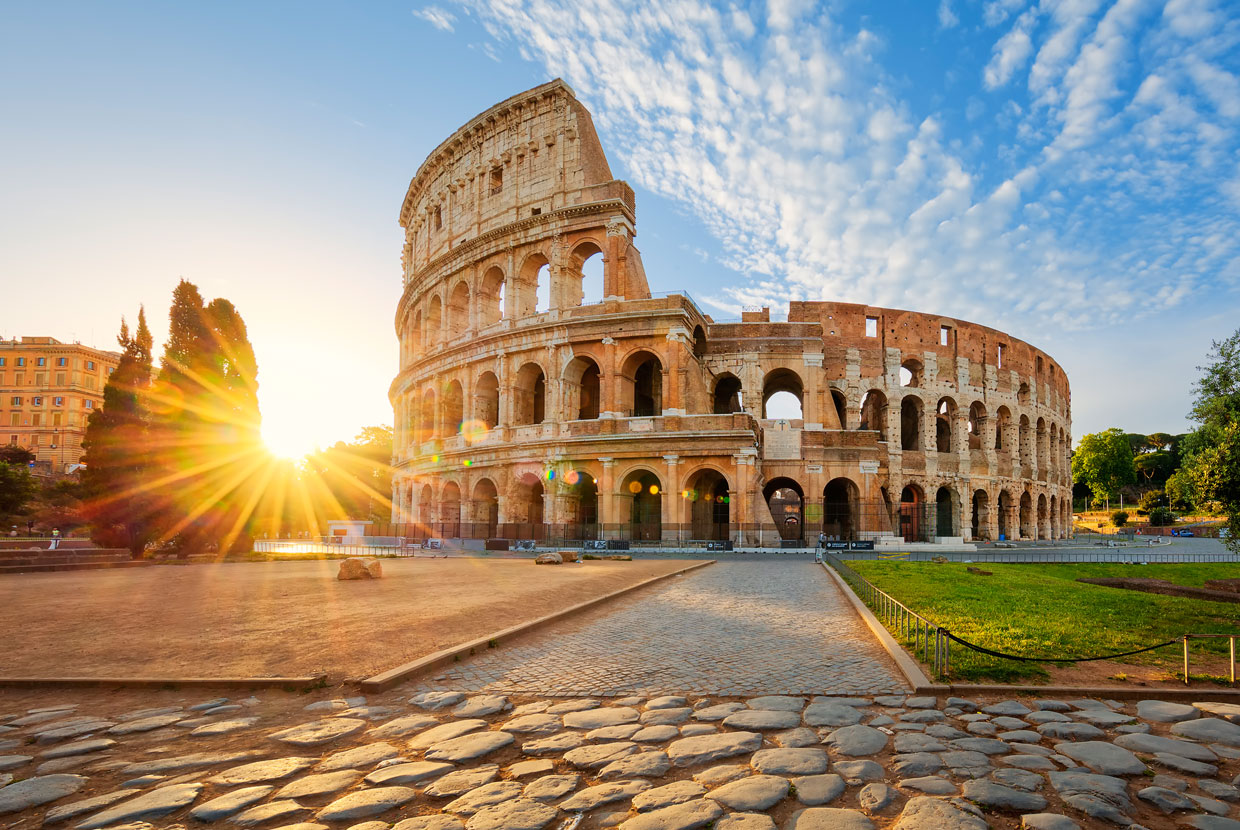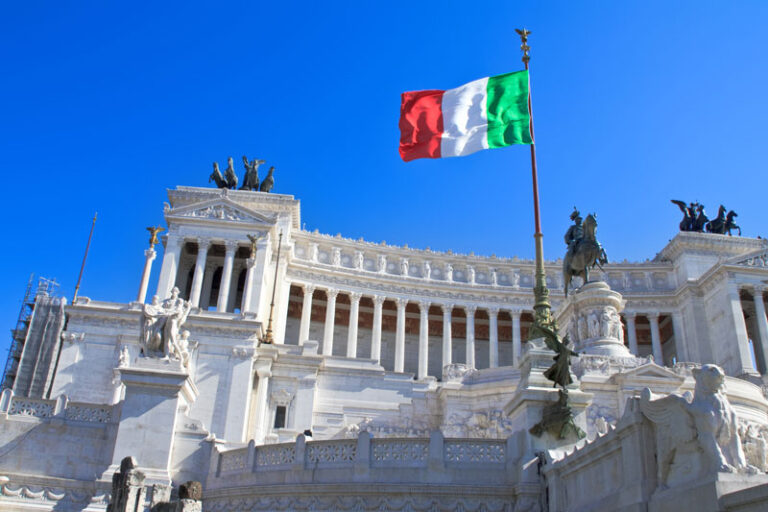
Believe it or not, the underground tunnels at the Colosseum are just as fascinating as the immense façade of this ancient relic in Rome. In fact, these tunnels were used to transport exotic wildlife into the venue such as tigers, rhino, crocodiles and bears, as well as linking the battle arena to a nearby training school for gladiators.
But what else do you know or what else would you like to know about the Colosseum?
In this article, we explore the colorful history and features of the Colosseum, and reasons why you might want to visit this world famous attraction in Rome:
What is the Colosseum Exactly?
Aside from recognizing the famous exterior of this iconic structure, most people know very little about the Colosseum until they visit. Standing at the very heart of the Roman Empire, the Colosseum was an amphitheater that was built in 70 AD for the purpose of holding prisoners, animals and gladiators. You might have noticed this building in certain movies such as Gladiator or Spartacus but either way, this is one of the most iconic and historical structures in the world.
Stretching for 83 meters in length and 48 meters wide, this was an incredible feat in terms of architecture and now one of the most recognizable landmarks on the planet. In fact, the Colosseum was the largest amphitheater ever constructed and could hold up to 80,000 spectators on any occasion.
Let’s take a quick look at the history of the Colosseum:
Micro-History of the Colosseum
Emperor Vespasian commissioned the construction of the Colosseum between 70 and 72 AD. Funded by the “Great Jewish Revolt”, the structure was also built by thousands of Jewish prisoners, many of whom were experienced artists, engineers and builders. Although the Emperor died before the Colosseum was finished, Titus Vespasian ensured the completion of his fathers work and the amphitheater was eventually opened under the name “the Flavian Ampitheater”.
As part of the opening, the new emperor organized one hundred days of “games” which involved endless gladiator fights and animal confrontations. In fact, more than 7,000 animals were said to be killed during these games and millions had attended the numerous events.
For many centuries, the Colosseum was used for similar games, while the emperor continued to construct more and more tunnels and galleries beneath the structure. There was even a church and cemetery, and also housing in which locals could rent their own private hideaway.
However, the Frangipani family changed all of that by fortifying the castle and turning the Colosseum into a castle. It was only the mid-fourteenth century when an earthquake caused the structure to fall apart and leave the Colosseum as a former shadow of itself.
In more recent times (18th century), several popes tried to reinvent the Colosseum as a religious structure but two centuries later, natural disasters struck again and destroyed most of the Colosseum. Most people seem to be unaware of this fact and do not know that the building was only restored in the 1990s when a government initiative decided to turn the Colosseum into a historical attraction.
What Features You Need to Encounter at the Colosseum
Outside the Colosseum – If you don’t have the time or money or will to go inside the Colosseum, you should at least witness this masterpiece from the outside. Needless to say, this does not cost you anything and the impressive architecture is nothing short of mind-blowing.
Inside the Colosseum – Few experiences in Rome can compare to taking a walk through the Colosseum. Featuring spectacular facades and quite an intense atmosphere, the inside of this structure is just as memorable as the iconic exterior. In fact, not only can you take a seat like one of the locals many centuries ago but you can also walk through the underground tunnels and gather a real appreciation for the importance of this immense structure.
Arch of Constantine – This is the largest Roman arch at the Colosseum which marks a famous victory by Emperor Constantine at the battle over Milvian Bridge.
The Roman Forum – Located next to the Colosseum, this was the epicenter for Roman politics and an incredible ruin with impressive columns, arches and stonework.
Palatine Hill – Looking out over the city, the top of this hill offers the best views of the Colosseum and the Roman Forum. You can also learn about the history of this neighborhood, for this is was one of the most sought after places to live back in Roman times.
Visiting the Colosseum and the Best Way to Get Tickets
Located next to the Piazza Venezia and the Roman Forum, the Colosseum sits right at the heart of Rome. You can take a taxi or bus right up to the entrance but due to traffic, the metro station is often the best way to arrive.
As for entry, you can buy tickets at the entrance or from local tourist offices and different packages include access and tours to various parts of the Colosseum. At the same time, you should keep in mind that the lineup is usually quite long and it’s not uncommon to wait for more than one hour to gain entry.
That being said, the easiest and best way to get access to the Colosseum is to buy tickets online. After all, this will save you from a rather painful wait and ensure that you can join a much smaller lineup at the entrance at which your printed ticket needs to be scanned.
Roman Colosseum Resources:
- Myths & Secrets of the Colosseum
- Roman Colosseum History
- The Colosseum for Kids
- Ancient Rome for Kids
- The Colosseum: Power, Brilliance, and Brutality
- The Roman Gladiator
- Engineering in Ancient Rome
- Colosseum in Ancient Rome
- Smart History of the Colosseum
- Gladiators, Chariots, and the Roman Game
Final Thoughts
Visiting the Colosseum is an absolute must-do in Rome and one of the most impressive encounters you will ever find of the ancient world. Whether you have dual citizenship or are just visiting the Colosseum is Romes number one attraction. What’s more, buying tickets online can help you avoid the lineup outside and there are different packages available depending on how long you would like to spend inside. Either way, this is on attraction you should not miss in the capital and this ancient relic is sure to be one of the highlights of your trip inside the notorious Roman Empire.





